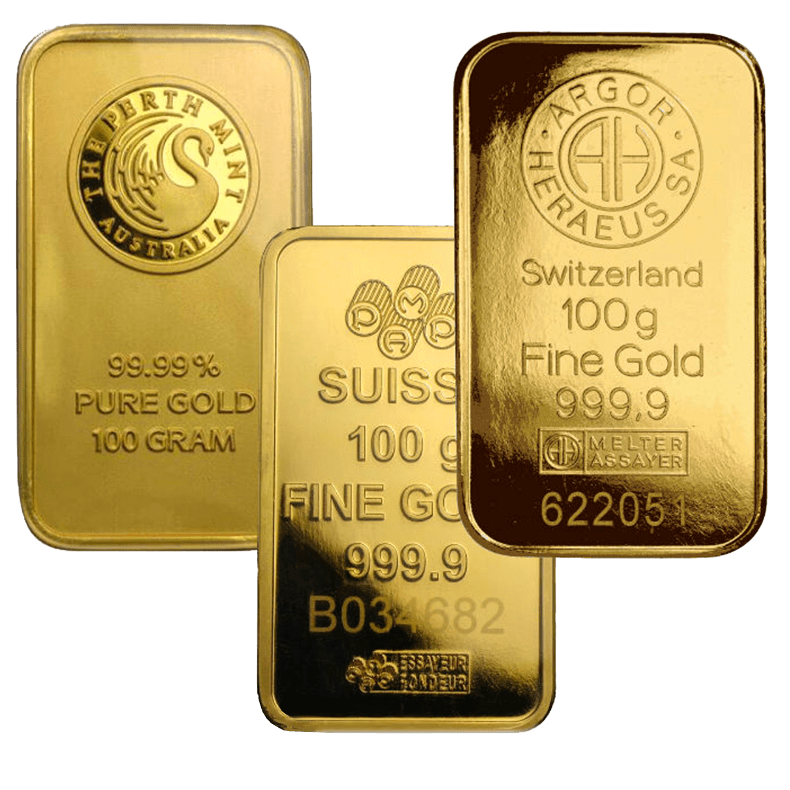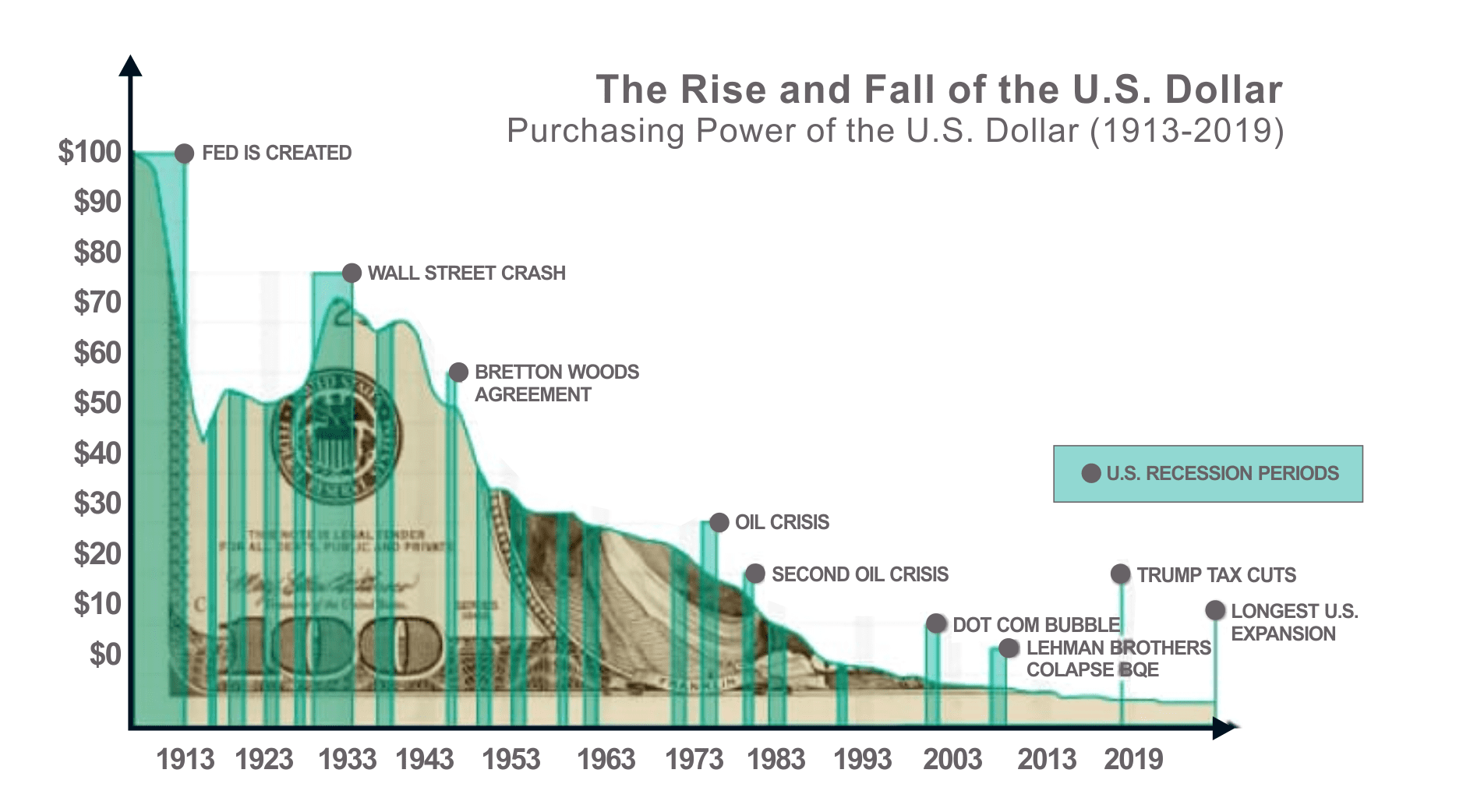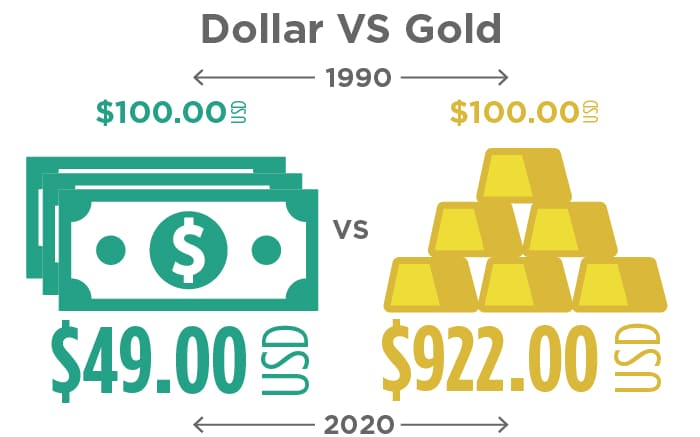
Why need invest in gold?
We turned gold into an asset
Top Reasons to Invest in Physical Metals
1. Precious Metals provide stability during volatile times
2. They help you protect what you have
3. Metals are a top performing asset class – just behind real estate
4.Precious Metals hold their value and protect your future
Stability in Volatility
If you are concerned about the volatility of the stock market, you’re not alone. The extreme highs and lows of the stock market often lead investors towards safe-haven assets, like bullion. Historically, the Precious Metals market has an inverse relationship with the stock market, meaning that when stocks are up, bullion is down and vice versa.
This inverse correlation holds firm even when the stock market has crashed. Though Gold and Silver don’t automatically rise with every fall in the stock market, history points to bullion as a hedge during stock market declines. Bullion allows you to be prepared for such catastrophes, providing you with a hedge against economic uncertainty.

If you are concerned about the volatility of the stock market, you’re not alone. The extreme highs and lows of the stock market often lead investors towards safe-haven assets, like bullion. "we can see how inflation and changes in the Consumer Price Index have decreased the dollar’s purchasing power over the last century." Source: howmuch.net
Protect Your Investments
One of bullion’s strongest benefits is that it can protect your investments. Periods of economic, monetary, or geopolitical crises can wreak havoc on your portfolio. Bullion can allow you to use your investments in Gold and Silver as both a defensive tool against uncertainty and an offensive profit when other investments fall.
Bullion is typically referred to in terms of defense because of its historical staying power; however, Gold and Silver can also be used as offensive strategies when building wealth. Gold and Silver offer substantial profit potential.
When the world experiences unrest, and the market falls into crisis – putting our economic, fiscal and monetary systems at risk – bullion benefits. Investors look to Gold and Silver as safe-havens when fear strokes the market. The higher the apprehension, the higher the demand for safe-haven assets, the higher the price for Gold and Silver goes. With elevated risks on multiple fronts, Gold and Silver can offer a low-risk, high-reward investment option..

Metals hold value over time and provide wealth that can be securely passed down to future generations. Source: Visualcapitalist.com
Top Performing Asset Class
Though Gold is no longer used as currency in the modern world, the yellow Precious Metal has been a store of value for at least 3,000 years. Gold has been the second-best performing asset class since 2000, with annualized returns at nearly 8%, second only to real estate investment trusts with returns at 10%.
Because the global supply is relatively finite, Gold’s purchasing power has historically remained stable during inflationary times. Silver is also no stranger to longstanding value. Silver has been considered a precious element for over 6000 years. It was first used as a currency in 700 B.C. and has had a role as a trading metal in nearly every ancient and modern culture. Many find comfort in knowing that Gold and Silver have been recognized for their value throughout a great deal of humankind’s history.

Metals hold value over time and provide wealth that can be securely passed down to future generations. Source: OneGold.com
Supply and Demand
Since the 1990s, much of Gold’s supply in the market has come from Gold bullion sales from global central banks’ vaults. Because of the market crash in 2008, the rate at which global central banks were selling Gold slowed. The decrease of sales from global central banks coupled with the declining production beginning in 2000 increased the yellow metal’s price. As a general rule, a reduction in the supply of Gold increases the Gold price.
Despite finite supply, the demand for Gold has only grown. Gold is prevalent in many cultures, including China, where Gold bars are a conventional form of saving, and India, the second-largest Gold-consuming nation in the world. Demand for Gold has also grown among investors. Even during the COVID-19 pandemic, which ravaged the financial market, the Gold price returned 25% in 2020, supported by investor demand.
Due to advancements in medical science, technology and aesthetic preferences, Silver supply and demand has fluctuated a great deal through the centuries. Today, Silver’s demand is higher than ever because it is a crucial component of widely manufactured electronics, including computers, mobile phones and solar panels.
Global Silver production fell for the fifth consecutive year in 2020. The drop resulted from declining grades at several primary Silver mines and disruption-related losses at some major Silver producers. Much like Gold, Silver’s demand will likely continue to grow despite the limited supply.
According to the Silver Institute, Silver’s global demand will rise to 1.025 billion ounces in 2021, its highest in eight years. Silver has many uses, including industrial applications, like photovoltaics, the process of converting solar energy into direct current energy, jewelry creation, medicinal uses and minting Silver investment products. Physical investment, which covers Silver bullion coin and bar purchases, is expected to achieve a six-year high in 2021 of 257 million ounces.

The value of the U.S. Dollar has steadily decreased over the last several decades, making an investment in Precious Metals more appealing to those who want to minimize the impact of inflation on their assets. Source: www.apmex.com
USER REWIEVS

Avaz Odilov
An excellent service, as it allows you to buy real gold for large amounts, there is no need to go to the bank and there is no problem with its storage. I recommend!

Tim Azimov
I personally visited the bank vault before I began to use the Oltin24 service to check it personally. Gold is stored in the vault of reliable banks. A very fair system.








